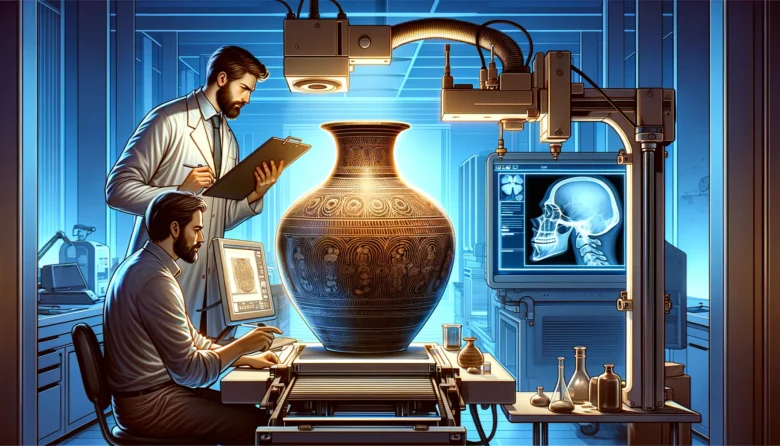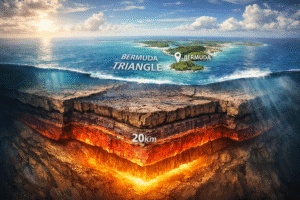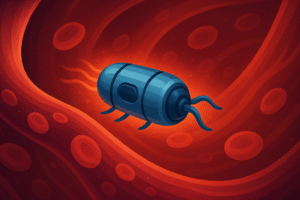Have you ever wondered how scientists peel back the layers of time to read the stories hidden in ancient artifacts? In today’s high-tech world, physicists are increasingly becoming the unsung heroes of archaeology. With tools that seem straight out of a sci-fi novel—like X-rays and particle accelerators—researchers are revealing secrets that have been locked away in artifacts for thousands of years. In this blog, we’ll explore how modern physics is helping us to not only uncover but also understand the incredible stories of our past.
Unveiling the Past with X-rays
 X-ray Technology Basics
X-ray Technology Basics
X-rays, a form of electromagnetic radiation, are more commonly known for their use in hospitals to look at broken bones. But they also have a crucial role in archaeology. X-rays can penetrate materials like parchment, fabric, and even metal, providing a glimpse into the internal workings and structures of ancient objects without damaging them.
Case Study: The En-Gedi Scroll
One of the most fascinating uses of X-ray technology was in the examination of the En-Gedi Scroll (discovered in 1970 during archaeological excavations at the synagogue in Ein Gedi, Israel. The scroll was found inside the Holy Ark of the synagogue and is estimated to be at least 1500 years old. Radiocarbon dating suggests the scroll dates to the third or fourth century CE, but there is disagreement over whether the writing itself supports this date).
This ancient Hebrew scroll was completely charred around 1,500 years ago and was unreadable to the naked eye. Scientists used advanced X-ray imaging to “virtually” unwrap the scroll and read its contents, discovering it contained a passage from the Book of Leviticus {the third book of the Torah (the Pentateuch) and of the Old Testament, also known as the Third Book of Moses}. This breakthrough allowed the scroll to be studied without the risk of it disintegrating.
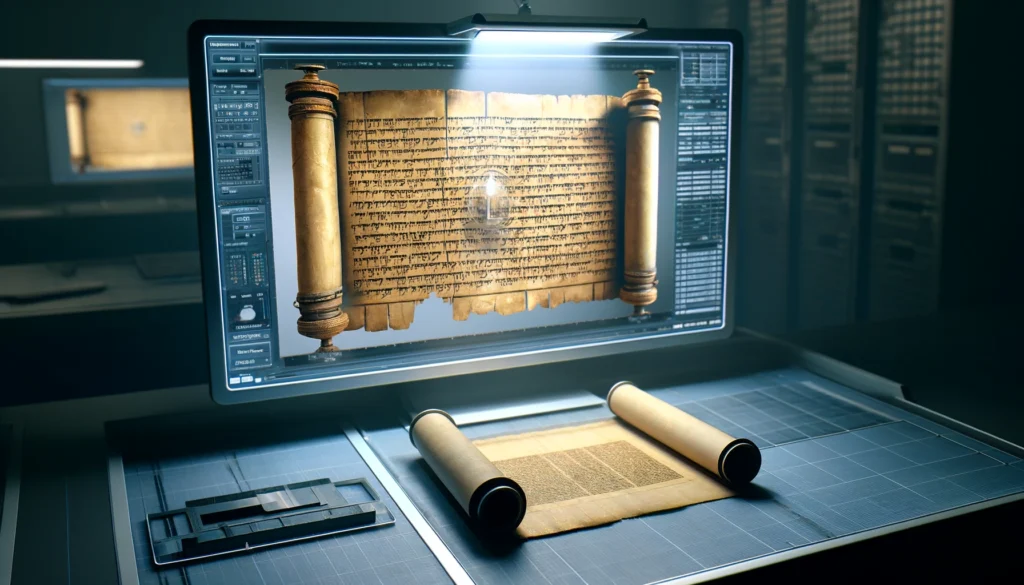
Impact and Implications
The ability to read ancient texts without physically opening them has revolutionized the field of archaeology. This non-invasive technique ensures precious artifacts can be preserved for future generations while still sharing their secrets with the world today. Looking forward, ongoing improvements in X-ray imaging promise even greater discoveries.
Particle Accelerators and Ancient Metals
Introduction to Particle Accelerators
While particle accelerators might be best known for their role in physics research, such as in the Large Hadron Collider of CERN {The European Organization for Nuclear Research, abbreviated as CERN (from the French ‘Conseil européen pour la Recherche Nucléaire’ or European Council for Nuclear Research, as its predecessor was called)}, they also play a significant part in archaeology. These machines accelerate atomic particles to incredibly high speeds and smash them into target materials, allowing scientists to understand the composition and properties of ancient metals.
Analyzing Ancient Metals
Using particle accelerators, researchers have been able to analyze objects like Viking swords and Roman coins without causing any damage. These studies reveal not just what materials were used but also the metallurgical techniques ancient craftsmen employed, providing insights into the technological advancements of historical civilizations.
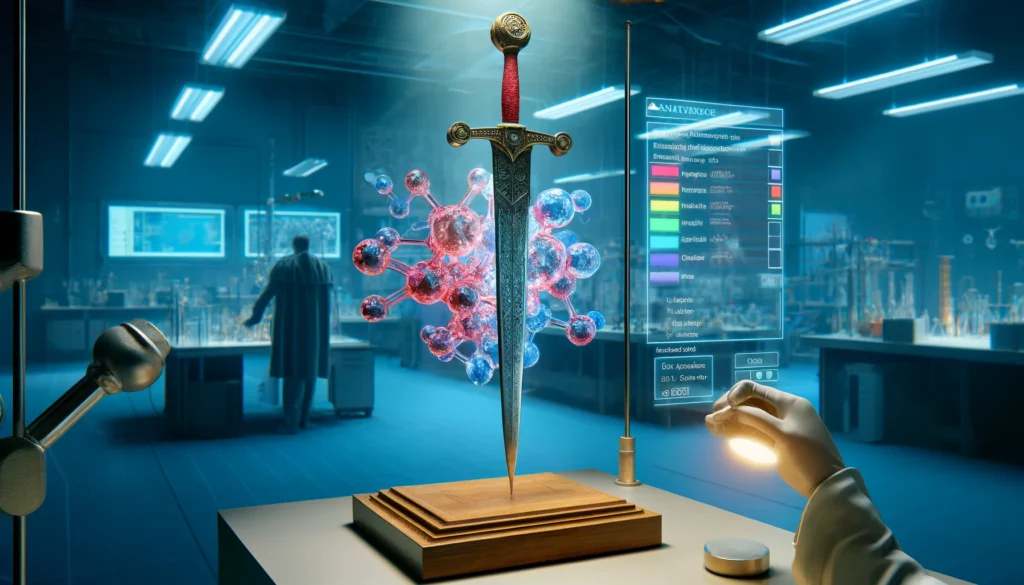
Broader Benefits
The knowledge gained goes beyond academic interest; it also informs methods for preserving these artifacts against corrosion and forgery. Furthermore, understanding the material composition of artifacts helps verify their authenticity, protecting against modern forgeries in the art market.
Other Physics-Based Techniques in Archaeology
Thermal Imaging and Ultrasound
Beyond X-rays and particle accelerators, other physics-based techniques like thermal imaging and ultrasound are proving invaluable. Thermal imaging can detect variations in temperature that are caused by buried structures, helping archaeologists locate ruins without digging. Ultrasound, on the other hand, is used to probe the interior of dense artifacts, like ceramics or stone carvings, to understand their structure and condition.
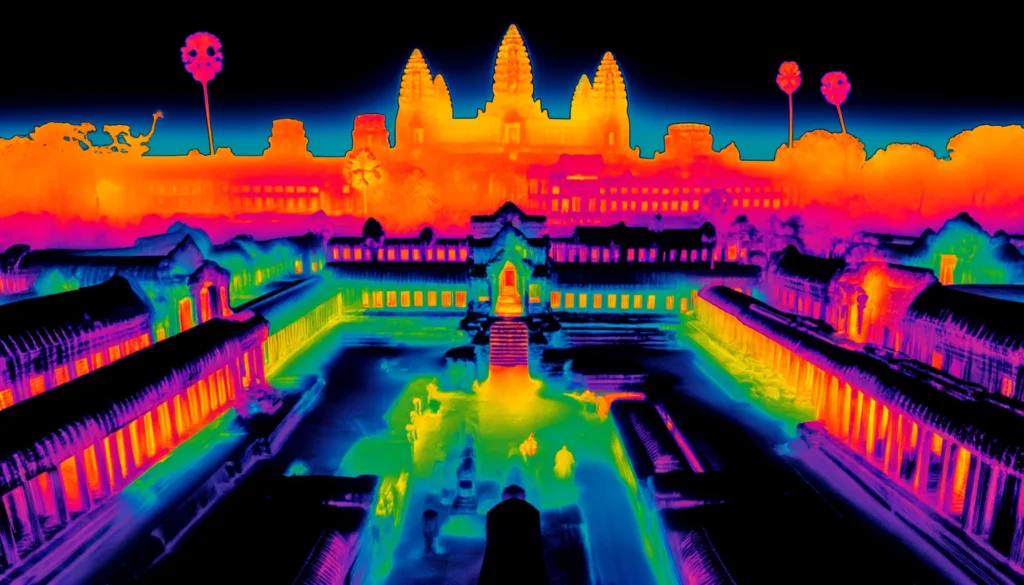
Case Study: Thermal Imaging in Angkor Wat
In the ancient temple complex of Angkor Wat in Cambodia, Asia, thermal imaging has been used to uncover buried structures without the need for excavation. Researchers were able to identify underground waterways and architectural anomalies, providing new insights into the construction and layout of this vast historical site.
Case Study: Ultrasound in Egyptian Pottery
Ultrasound technology was instrumental in examining the internal structure of Egyptian pottery. Archaeologists used it to detect air pockets and material inconsistencies that revealed information about the methods and materials used by ancient potters. This non-destructive technique helped preserve these fragile items while still allowing a detailed study of their construction.
Magnetic Resonance Imaging (MRI) and Its Uses
Originally designed for medical use, MRI technology has also been adapted for archaeological purposes. It offers a detailed view of the interior of mummified remains without requiring physical dissection, preserving these precious historical bodies while still allowing them to reveal their secrets.
Case Study: MRI of the Nubian Mummies
A groundbreaking study involved the use of MRI to examine mummified remains from the ancient Nubian civilization (Nubia is a region in modern-day Egypt and Sudan, located along the Nile River). The MRI scans provided unprecedented details about the tissues, organs, and even the diseases the mummies had suffered from. This information offered insights into their diet, health, and the mummification techniques, which differed significantly from those used by the Egyptians.
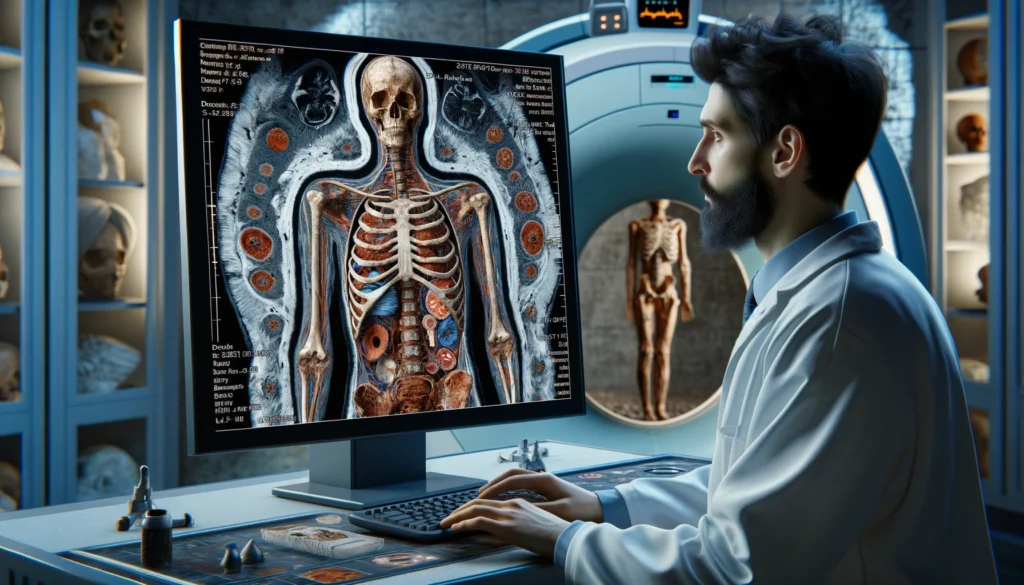
Case Study: MRI in the Study of Ancient Insect Inclusions in Amber
Researchers have also used MRI to study insect inclusions in amber. Amber, which is fossilized tree resin, has been particularly well-known for preserving insects and other small organisms from millions of years ago. Some of the most famous amber deposits containing such inclusions are found in the Baltic region in Northern Europe (Baltic amber) and the Dominican Republic in the Caribbean sea. These deposits are renowned for their exceptional preservation quality, allowing scientists to study the physical characteristics and sometimes even the behaviors of ancient insects that lived during the time of the dinosaurs.
Using MRI technology to study these inclusions provides a non-destructive way to view the insects in three dimensions and in fine detail, helping researchers understand more about the biodiversity and ecological conditions of ancient times.
Conclusion
The integration of physics into archaeology has opened up a new dimension of exploration into our past. Techniques like X-ray imaging, particle acceleration, and MRI have transformed our approach to uncovering and preserving ancient artifacts. As technology continues to advance, who knows what other secrets we will uncover from the depths of history? The stories waiting to be told are as limitless as the technologies we develop to discover them.
This exciting intersection of science and history not only helps us preserve our heritage but also deepens our understanding of human civilization across millennia. With every artifact studied, we add another piece to the jigsaw puzzle of our past, piecing together the human story one atom at a time.
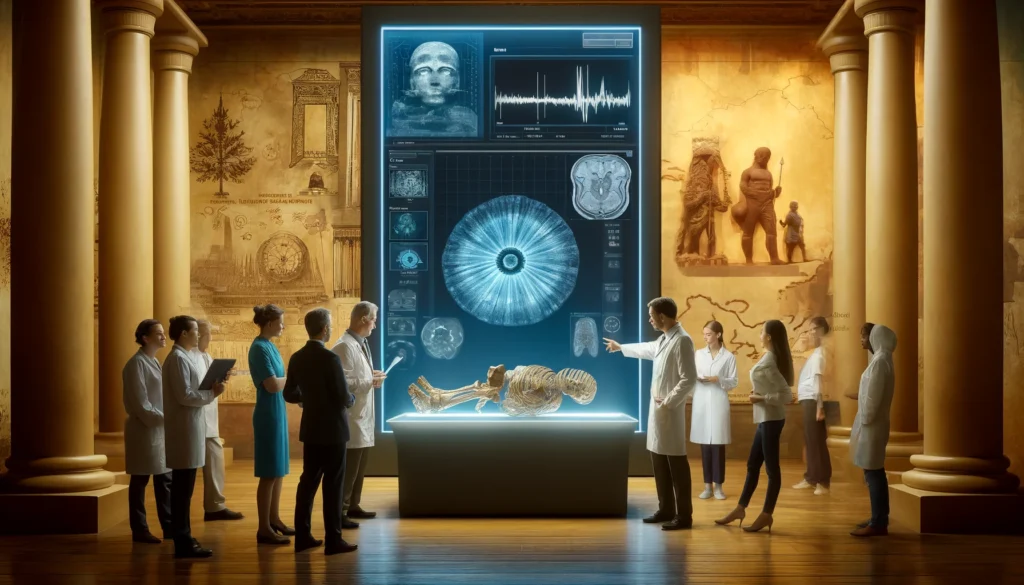
Author’s Note
Thank you for joining me on this fascinating journey into the intersection of physics and archaeology. As we’ve seen, the application of modern scientific techniques has revolutionized our ability to understand and preserve our historical heritage. I hope this blog inspires curiosity and appreciation for both ancient crafts and the modern technologies that help us explore them. Your thoughts and feedback are welcome in the comments below!
G.C., Ecosociosphere contributor.
References and Further Reading
- “Archaeology’s New Vision of Ancient Israel and the Origin of Its Sacred Texts” by Israel Finkelstein and Neil Asher Silberman – A groundbreaking book that explores the use of various scientific methods in archaeology.
- “The Hidden History of the Human Race” by Michael A. Cremo and Richard L. Thompson – This book discusses controversial and alternative viewpoints in archaeology, including the use of sophisticated technologies.
- “Techniques in Archaeological Geology” by Ervan Garrison – Provides a detailed explanation of various scientific techniques used in archaeology, including X-ray fluorescence and particle acceleration.

